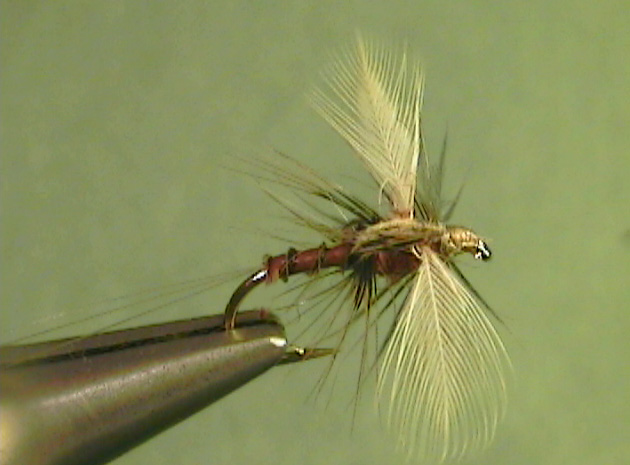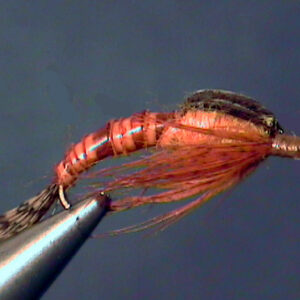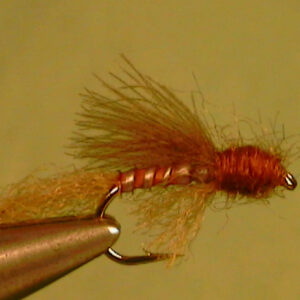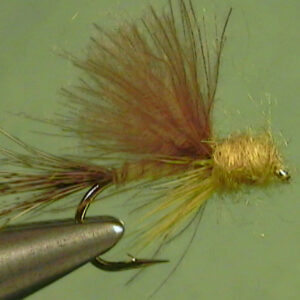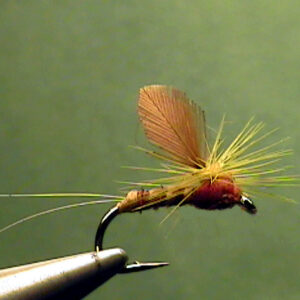Hook Size 10/12
The American March Brown spinner fall is usually the best part of the hatch. That is
because the spinner fall congregates the mayflies that have hatched over a long period
of time into a short climax. That is also the downfall to it. The entire spinner fall last for
only a short time or an average of about an hour.
If it is a bright, clear day with lots of sunshine, the spinner fall will most likely occur just
prior to dark. If it is a cloudy, rainy or overcast day the spinner fall may occur much
earlier or late in the afternoon. Most of the time when the spinners do fall, the light is low
enough that you can barely see the flies in the air or on the water even though they are
large mayflies. Of course the trout will continue to eat the spinners long after they fall
into the water.
Usually the trout will not feed on them in the fast water where the females deposit their
eggs, fall spent and die. The trout usually congregate below the fast water in current
seams at the ends of long runs, the heads of pools and other places where the current
congregates the spinners. This allows the trout to remain in one area and sip the
spinners off the surface of the water.
Presentation:
Presentation of the spinner imitation depends entirely on the location of the trout that are
feeding on them. In the low light situations when the spinners are on the water it is not
only next to impossible to see the spinners, it is also difficult to see the trout feeding on
them. They do not make a splashy rise. They leave only a small rise ring when they sip
the spinners. Unless the remaining sunlight is hitting the water just right, you may never
notice either one of them.
There is nothing wrong with using another higher floating, more visible fly located a two
or three feet ahead of the spinner fly to serve as an indicator. That will help you detect
the takes. This method works fairly well. However, it is best to concentrate on the
presentation watching the end of your fly line. If the remaining light is assisting any you
should be able to track you spinner imitation well enough to detect the strikes. In other
words, even though you can’t see the fly, you know where it is close enough to detect the
take. If you loose sight of the fly, and you don’t think it is near trout eating the spinners,
you can make the fly move by stopping the drift and slightly raising the tip of your fly rod.
The purpose of this is to deliberately create drag for a second or two. In smooth water,
you can easily spot the surface disturbance the fly makes. To avoid spooking the trout,
just make certain you attempt this trick before the fly gets into the productive strike zone
or area where you think the trout may be holding. If the spinner fall is fairly heavy and
you get in the right position in the stream (or on the bank) just before the spinners start
falling, you stand an excellent chance of catching several fish in a very short time. On
several occasions, Angie and I have discovered the March Brown spinners mixed in with
the Red Quill and Hendrickson spinners. Because the hatch last so long you may find
that spinners of the Pale Evening Duns, Sulfers, Light and Cream Cahills and other
mayflies mixed in with the American March Brown spinners. In the low light, the mixture of
spinners makes catching trout even easier. You just have to hope
that you can get in on this action while it is still legal to fish.
Copyright 2013 James Marsh
